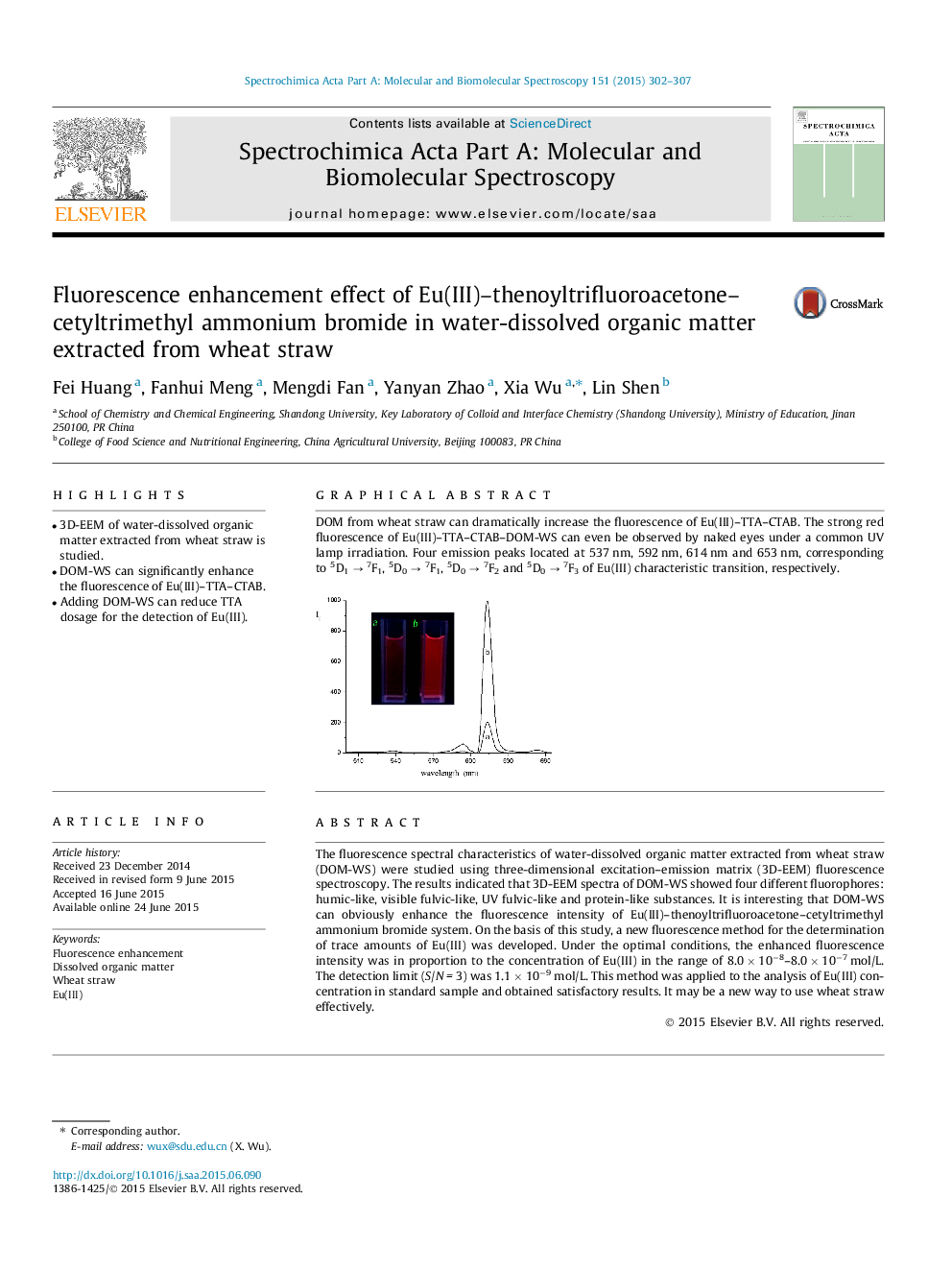| Article ID | Journal | Published Year | Pages | File Type |
|---|---|---|---|---|
| 1230083 | Spectrochimica Acta Part A: Molecular and Biomolecular Spectroscopy | 2015 | 6 Pages |
•3D-EEM of water-dissolved organic matter extracted from wheat straw is studied.•DOM-WS can significantly enhance the fluorescence of Eu(III)–TTA–CTAB.•Adding DOM-WS can reduce TTA dosage for the detection of Eu(III).
The fluorescence spectral characteristics of water-dissolved organic matter extracted from wheat straw (DOM-WS) were studied using three-dimensional excitation–emission matrix (3D-EEM) fluorescence spectroscopy. The results indicated that 3D-EEM spectra of DOM-WS showed four different fluorophores: humic-like, visible fulvic-like, UV fulvic-like and protein-like substances. It is interesting that DOM-WS can obviously enhance the fluorescence intensity of Eu(III)–thenoyltrifluoroacetone–cetyltrimethyl ammonium bromide system. On the basis of this study, a new fluorescence method for the determination of trace amounts of Eu(III) was developed. Under the optimal conditions, the enhanced fluorescence intensity was in proportion to the concentration of Eu(III) in the range of 8.0 × 10−8–8.0 × 10−7 mol/L. The detection limit (S/N = 3) was 1.1 × 10−9 mol/L. This method was applied to the analysis of Eu(III) concentration in standard sample and obtained satisfactory results. It may be a new way to use wheat straw effectively.
Graphical abstractDOM from wheat straw can dramatically increase the fluorescence of Eu(III)–TTA–CTAB. The strong red fluorescence of Eu(III)–TTA–CTAB–DOM-WS can even be observed by naked eyes under a common UV lamp irradiation. Four emission peaks located at 537 nm, 592 nm, 614 nm and 653 nm, corresponding to 5D1 → 7F1, 5D0 → 7F1, 5D0 → 7F2 and 5D0 → 7F3 of Eu(III) characteristic transition, respectively.Figure optionsDownload full-size imageDownload as PowerPoint slide
